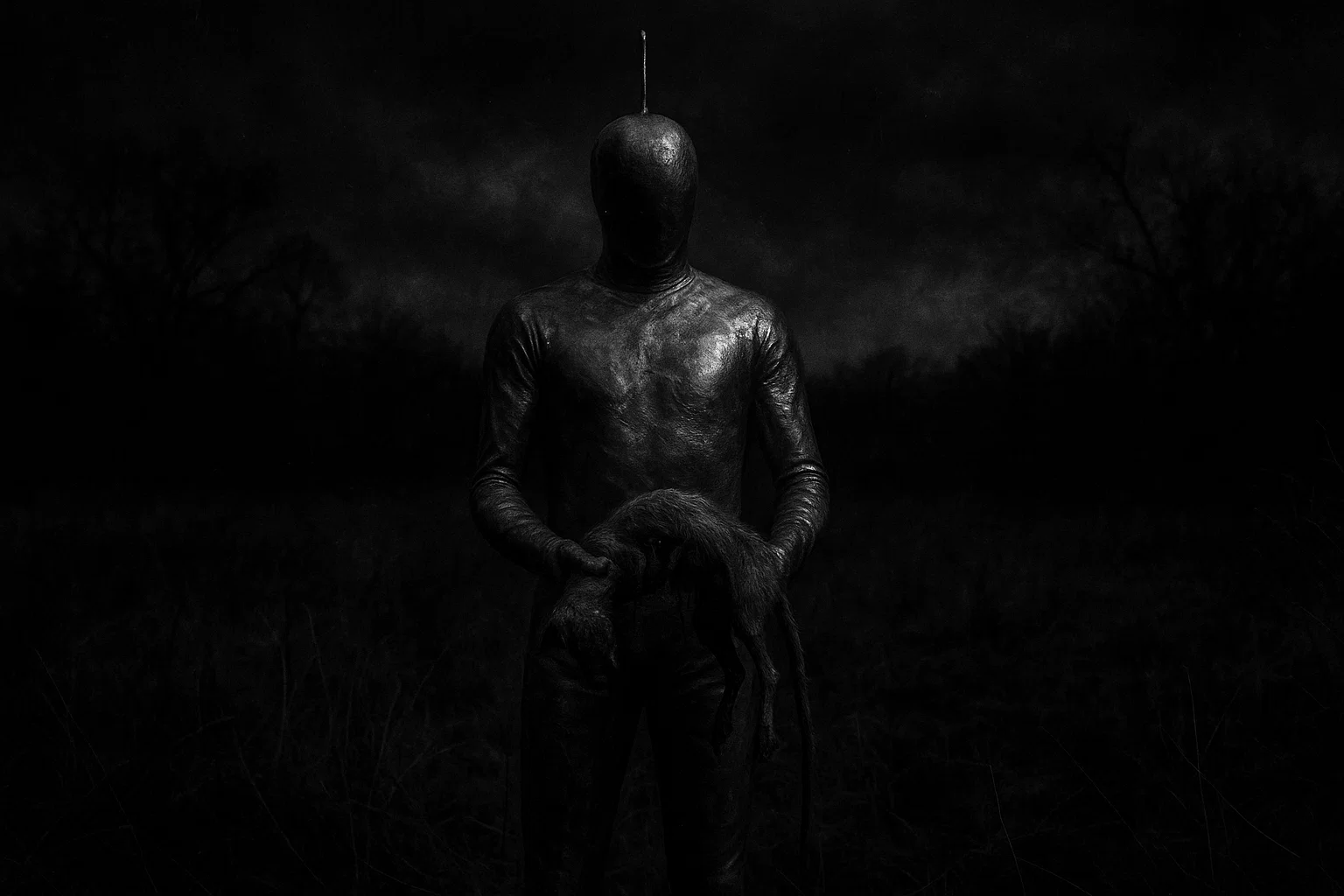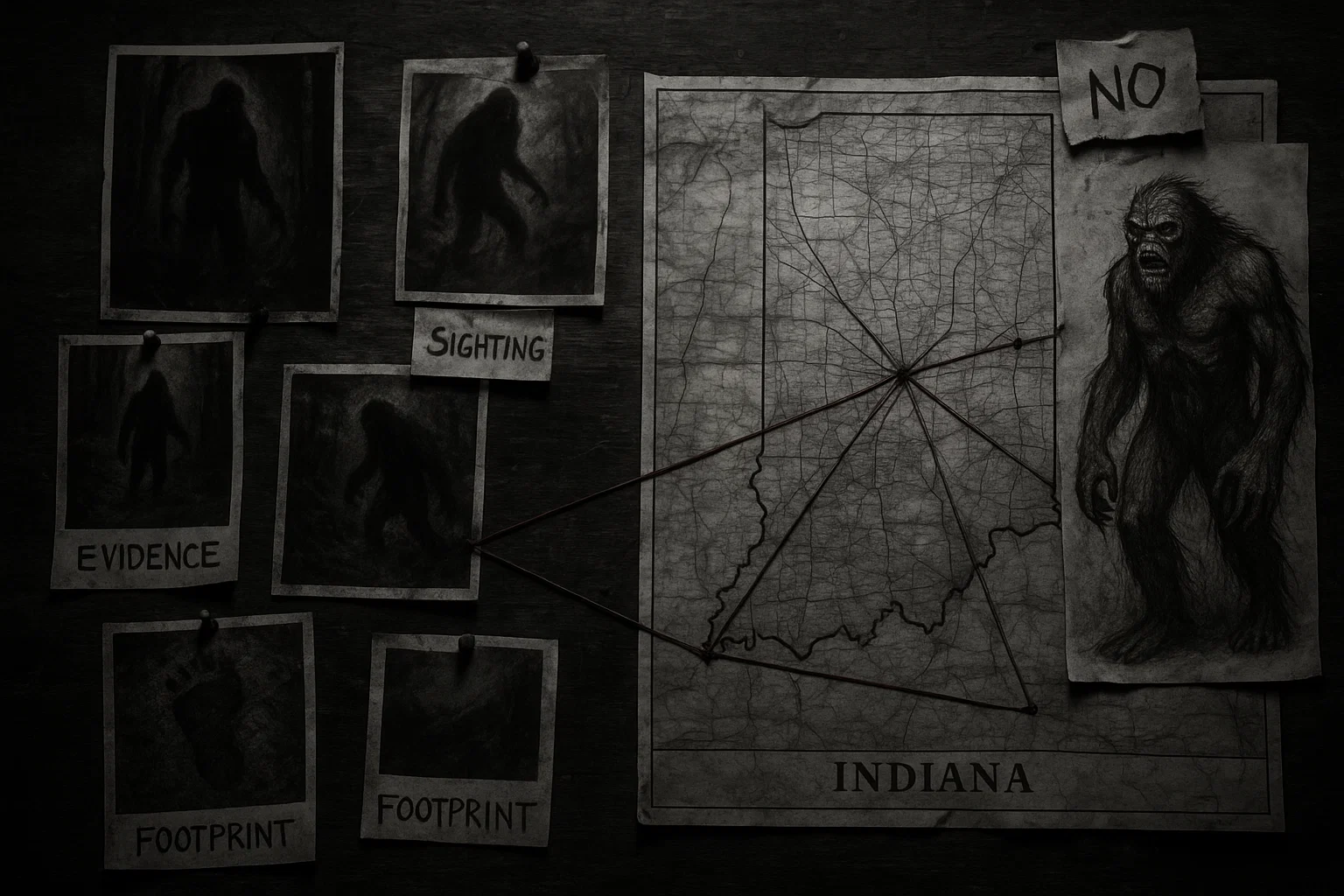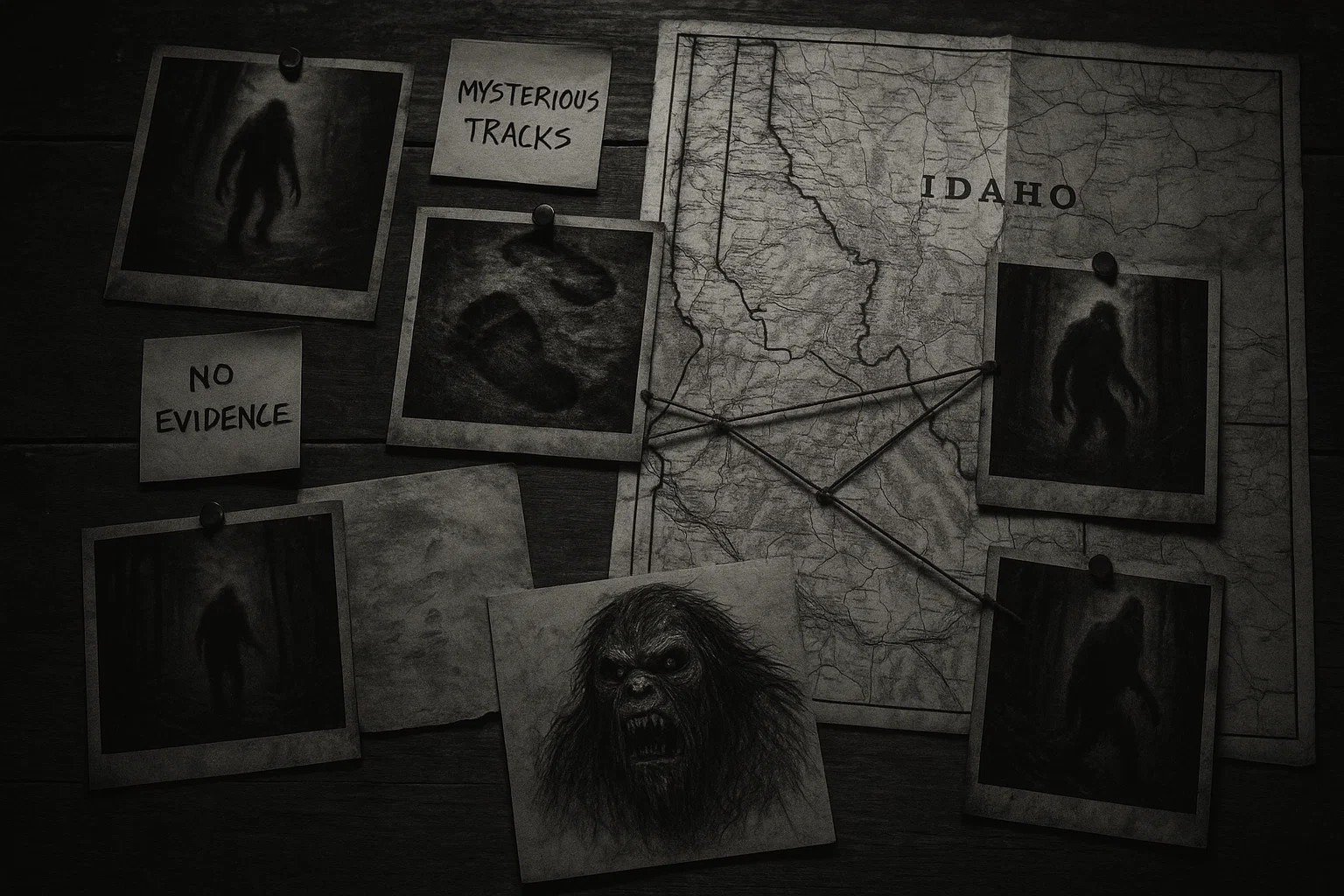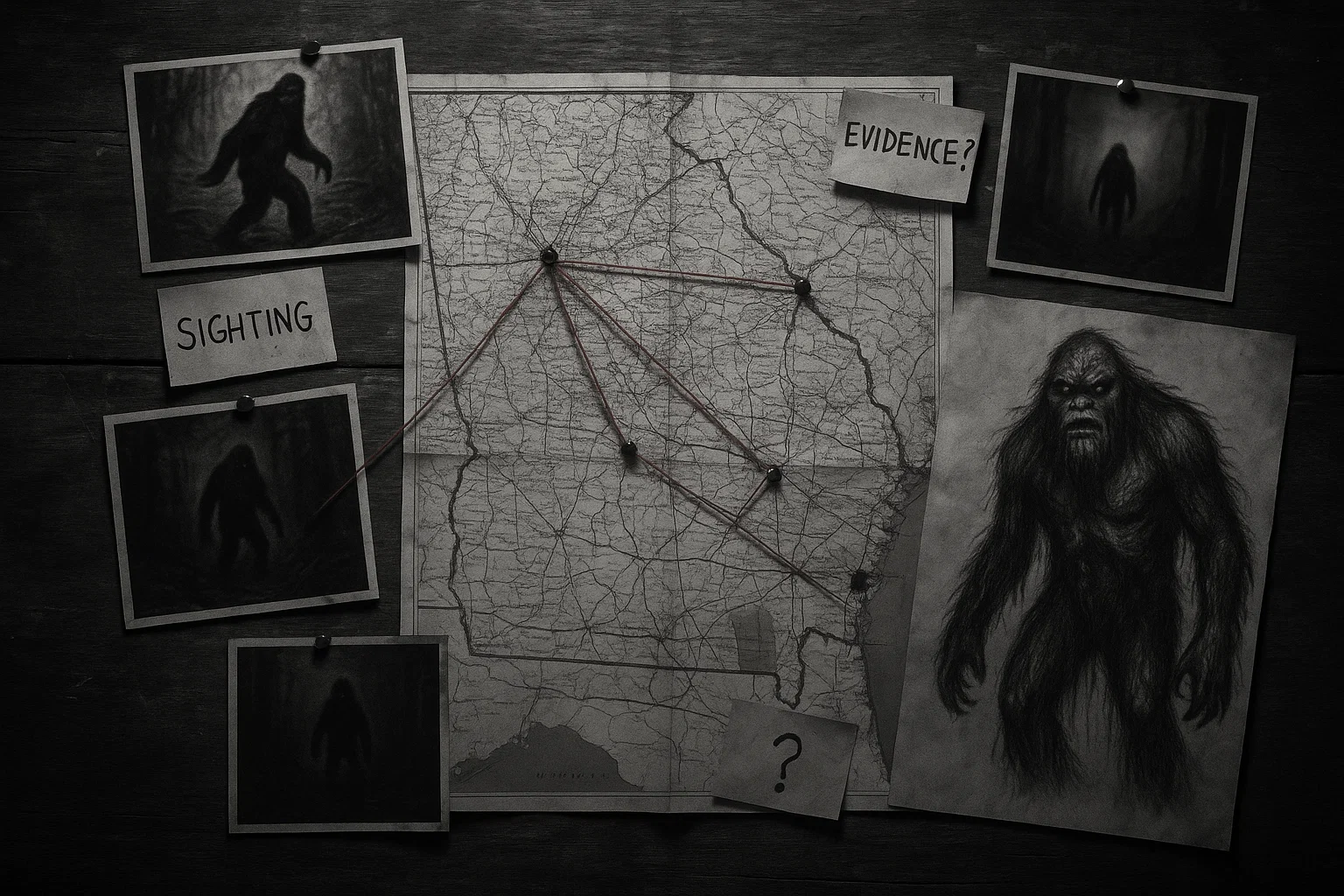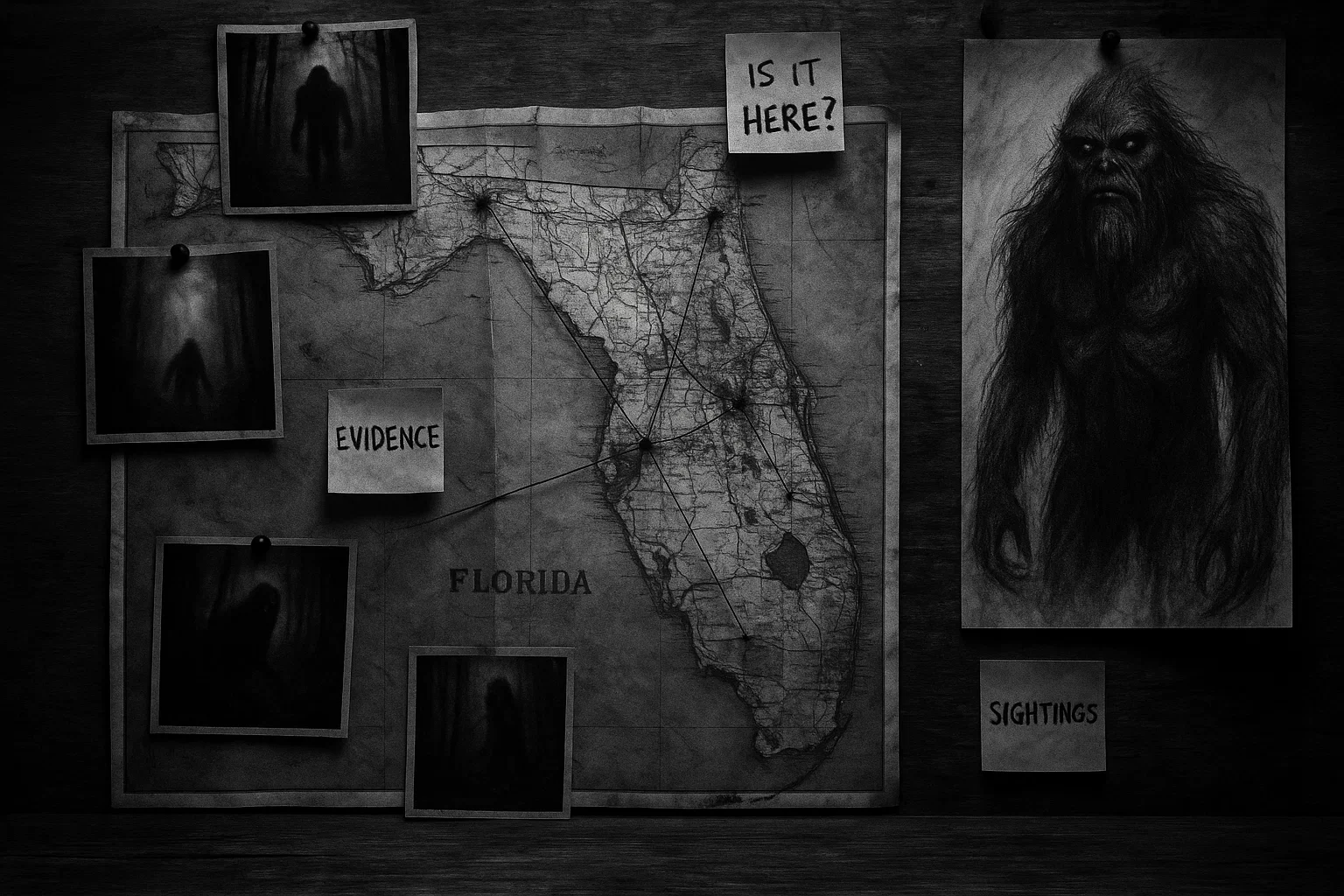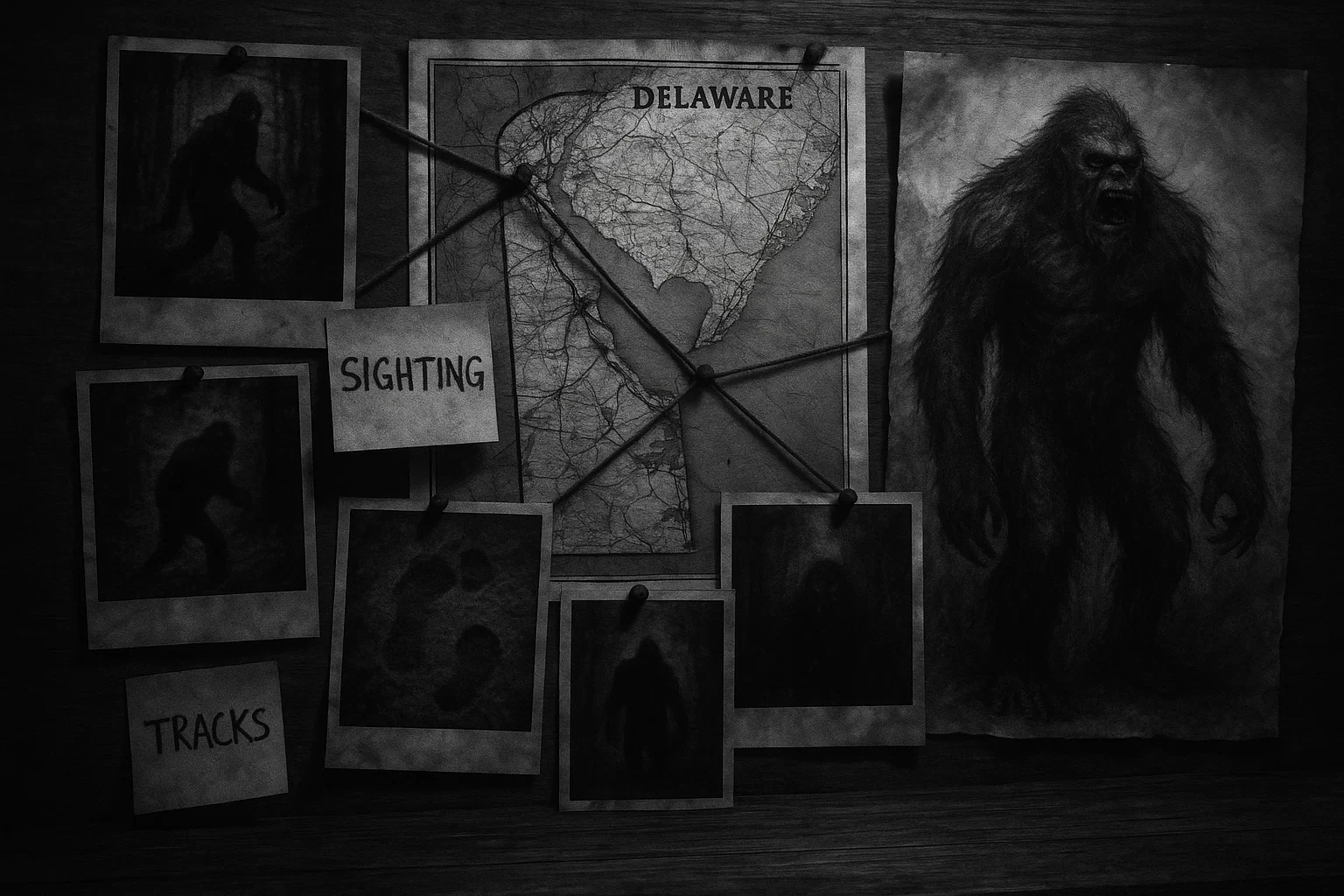On a quiet October night in 1973, Falkville, Alabama—a small, rural town—became the unlikely epicenter of one of America’s most bizarre cryptid encounters: the Alabama Metal Man (also called the “Falkville Metal Man”).
This reflective, humanoid figure startled Police Chief Jeff Greenhaw, igniting a firestorm of speculation. Was it an extraterrestrial visitor, a prank gone wild, or something else entirely?
For decades, the “Jeff Greenhaw encounter” has puzzled enthusiasts and skeptics alike.
In this article, we explore its gleaming appearance, robotic behavior, the rich habitat of Falkville, the detailed 1973 sighting, media coverage, possible explanations, and comparisons to other cryptids—unpacking the mystery with fresh historical context and vivid detail.
Table of Contents
What Does the Alabama Metal Man Looks Like?
The Alabama Metal Man was no ordinary figure lurking in the shadows. Standing approximately 6 feet tall, it wore a suit that gleamed like polished metal or thick aluminum foil—intensely reflective, smooth, and seamless.
Jeff Greenhaw, the sole witness, described it as “shiny as glass” in a 2020 Red Water Filmworks interview, emphasizing its mirror-like quality. The suit lacked visible joints, buttons, or seams, blending the head into the body without a distinct neck. Furthermore, an antenna-like protrusion jutted from its head, lending it a robotic, almost sci-fi aesthetic.
Greenhaw’s account paints a vivid picture: the figure’s surface caught the light from his car’s headlights and camera flash, dazzling his eyes. “It looked like tin foil,” he recalled, yet it appeared both flexible and rigid—a paradox that defied explanation.
In the now-iconic photographs he snapped, the Metal Man stands stiffly on a dirt road, its posture awkward and unnatural. Unlike typical cryptids with fur or scales, this figure had no facial features—no eyes, nose, or mouth—making it eerily blank.
Some speculate the suit was designed to deflect scrutiny; others wonder if it hid something (or someone) inside. Indeed, its humanoid shape paired with such an alien exterior sets the “Falkville cryptid” apart from earthly beings.
What’s more, the texture seemed otherworldly. The photographs—grainy yet compelling—show a silhouette that reflects light uniformly, with no creases or wear. Was it a costume, a machine, or an extraterrestrial shell? The absence of human traits, combined with its polished sheen, keeps the Alabama Metal Man a captivating enigma!
Behavior
The Metal Man’s behavior was as strange as its appearance, blending robotic stiffness with surprising agility. Greenhaw noted its movements were “childlike or monkey-like” yet distinctly mechanical—jerky and deliberate, as if unaccustomed to human motion.
In a 1973 Decatur Daily article, he said it appeared “perplexed” during their brief encounter, standing silently before reacting. Then, when Greenhaw approached, it turned and bolted, covering three-meter strides at an astonishing pace.
How fast was it? Greenhaw estimated it outran his police car, hitting speeds of 40 mph—a feat discussed widely on Reddit’s r/ChilluminatiPod. For example, its gait was stiff-legged, lacking the fluidity of a human or animal, yet it moved with incredible efficiency.
You May Also Like: Mackenzie Poltergeist: World’s Most Violent Haunting?
The figure’s legs seemed to piston mechanically, propelling it forward in a way that defied its awkward posture. After all, no human could sustain such speed over rough terrain, especially in a restrictive suit!
Equally important, the Metal Man was silent. No footsteps echoed, no clothing rustled, and no mechanical whirs broke the night’s stillness. This eerie quiet—coupled with its non-aggressive yet evasive nature—left Greenhaw stunned.
Naturally, questions arise: Was it programmed to flee? Could a prankster push human limits so far? Consequently, its behavior fuels both skepticism and wonder, making the “1973 UFO sighting” a story that lingers in the mind.
Habitat
The Alabama Metal Man emerged in Falkville, Alabama—a town steeped in history and surrounded by a landscape ripe for mystery.
Founded in 1872 as a railroad stop, Falkville grew from a handful of settlers into a quiet agricultural hub in Morgan County. Its early years were shaped by cotton farming and the railroad, with the population hovering around 1,000 by the mid-20th century.
Surrounded by sprawling fields, dense woodlands, and dirt roads, Falkville’s isolation—far from urban sprawl—made it an ideal setting for the 1973 encounter.
However, Falkville’s past holds more than just farming tales. In the 1890s, newspapers reported a “phantom train” haunting the tracks, its ghostly whistle unnerving locals.
Later, in the 1950s, mysterious lights danced in the sky above Morgan County, sparking UFO rumors (documented in the Decatur Daily). These events hint at a regional penchant for the unexplained.
Besides, the town’s proximity to Redstone Arsenal—a military research facility 30 miles south—adds intrigue. Established in 1941, Redstone developed rockets and advanced tech by the 1970s; could a secret experiment have wandered into Falkville?
Moreover, the area’s natural features amplify its mystique.
The nearby Wheeler National Wildlife Refuge, established in 1938, spans 35,000 acres of wetlands and forests—a perfect hideout for a fleeing figure. Similarly, the rolling hills and thick underbrush could conceal strange visitors, real or staged.
In 1973, a nationwide UFO flap heightened local awareness; just days earlier, the Pascagoula Abduction in Mississippi described metallic aliens, suggesting a pattern. Thus, Falkville’s quiet, open spaces—combined with its odd historical echoes—made it a fitting stage for the “Falkville cryptid” to shine.
The Alabama Metal Man Sightings and Witnesses
The Alabama Metal Man’s legacy hinges on one unforgettable night: October 17, 1973. Here’s the full story:
It began with an anonymous phone call to Falkville’s police station. The caller, voice trembling, reported a UFO landing in a field off a rural highway. Jeff Greenhaw, the 26-year-old Police Chief, was off-duty but curious.
Grabbing his keys, revolver, handcuffs, and Polaroid camera, he drove to investigate. Around 10 p.m., he turned onto a gravel road—dusty, flanked by fields—and spotted something extraordinary.
You May Also Like: Battle House Renaissance Hotel Haunting: Room 552 Secrets
There, illuminated by his headlights, stood a 6-foot-tall figure clad in a reflective, foil-like suit. “It was shiny, like polished metal,” Greenhaw later told the Decatur Daily. An antenna protruded from its head, and its featureless form lacked eyes or a mouth.
Initially, he thought it might be a person in distress—or a prankster—but its stillness unnerved him. He stopped his car, stepped out, and called out, “Hey, you okay?” No response.
Next, Greenhaw raised his camera. The flash popped four times, capturing the figure’s awkward stance. “I wanted proof,” he said in a 2020 Red Water Filmworks interview. Suddenly, the Metal Man moved—jerkily at first, then with purpose. It turned and ran, its strides spanning three meters. Greenhaw jumped back into his car, floored the gas, and gave chase. Despite hitting 40 mph, he couldn’t keep up; the figure vanished into the darkness.
Afterward, his car bogged down in mud, ending the pursuit. Shaken, Greenhaw returned home, photographs in hand. “I’ve never seen anything like it,” he told reporters the next day.
The aftermath was brutal: ridicule flooded in, his house was vandalized, and he resigned weeks later. In 2020, he reflected, “I lost everything … but I know what I saw.”
No other confirmed sightings exist. For instance, Reddit’s r/Humanoidencounters mentions similar figures, but none match Greenhaw’s detail. The photographs—raw and unpolished—remain the cornerstone of this “1973 UFO sighting,” a moment frozen in time.
Media Coverage
The Alabama Metal Man’s story leapt from Falkville’s backroads to global headlines, evolving over decades. Local newspapers first seized the tale: the Decatur Daily’s 1973 front-page story, “Howdy Says Policeman…,” detailed Greenhaw’s encounter alongside his photos, while the Cullman Times marveled at the oddity.
Soon, the Birmingham Post-Herald (via UPI) reported Greenhaw’s resignation, tying it to public mockery. UFO magazines like Flying Saucer Review (1974) and UFO Report (1975) followed, dissecting the “Jeff Greenhaw encounter” for extraterrestrial clues.
Television amplified the mystery. Shows like In Search Of… (1978) and Unsolved Mysteries (1990s) brought the Metal Man to living rooms, blending eerie narration with Greenhaw’s images.
Meanwhile, a 2020 Red Water Filmworks interview (via the Cullman Tribune) offered Greenhaw’s reflections—he shunned fame, saying, “I just wanted the truth out.”
Podcasts later took the baton: Cryptid Campfire (2022) and Appalachian Monsters & Mysteries (2024) explored the sighting’s quirks, while One Strange Thing (2024) cited original articles, highlighting Greenhaw’s struggles. Online, Reddit’s r/ChilluminatiPod (2023) buzzed with debates—some users quipped it was a “Scooby-Doo villain,” others marveled at its speed.
This media journey—from print to digital—underscored the story’s staying power. Greenhaw’s photos, called “grainy but compelling” by the Montgomery Advertiser (1973), remain a lightning rod: skeptics see a hoax, believers see proof. Thus, the “Alabama Metal Man” endures as a cultural curiosity.
What Could It Be?
The Metal Man’s identity is a puzzle, with theories ranging from extraterrestrial to mundane. Below, we explore possibilities, focusing on Alabama’s environment and the 1973 context:
1) Human in a Costume (Hoax)
- Description: A prankster in a reflective suit, possibly targeting Greenhaw.
- Pros: The 1970s saw UFO hoaxes, and the suit’s awkward movements suggest a human in restrictive gear. Greenhaw’s resignation and ridicule could indicate a prank’s fallout.
- Cons: No prankster confessed, and the figure’s speed (40 mph) exceeds human capability, per biomechanics studies. The suit’s seamless design also seems advanced for a small-town prank.
- Likelihood: High—simplest explanation, though speed remains a hurdle.
2) Misidentified Object/Person
- Description: A reflective object (e.g., farm equipment) or person in unusual clothing mistaken in low light.
- Pros: Falkville’s rural setting includes shiny machinery, and fear could distort perception.
- Cons: Greenhaw’s photos and detailed account—robotic gait, antenna—rule out simple objects. No local reports of reflective-clad individuals surfaced.
- Likelihood: Low—specificity of description undermines this.
3) Military Experiment
- Description: A robotic prototype or suited test subject from nearby Redstone Arsenal, a military research hub.
- Pros: Redstone, 30 miles from Falkville, developed advanced tech in the 1970s. The figure’s robotic traits could reflect early robotics.
- Cons: No 1973 records show such technology, and a test subject escaping to a public road is improbable.
- Likelihood: Moderate—intriguing but speculative.
4) Extraterrestrial Being
- Description: An alien in a protective suit, tied to the UFO report.
- Pros: The 1973 UFO flap and Pascagoula’s metallic aliens provide context. The suit’s design and speed suggest non-human origins.
- Cons: No spacecraft or additional evidence was found. Humanoid aliens are a sci-fi trope, not a scientific norm.
- Likelihood: Low—lacks corroboration beyond Greenhaw’s account.
5) Environmental Phenomenon
- Description: A mirage or light reflection mimicking a figure.
- Pros: Rural Alabama’s fields could produce optical illusions at night.
- Cons: Photos and Greenhaw’s pursuit negate a static illusion. The figure’s physicality—running, reflecting flash—requires a tangible object.
- Likelihood: Very low—doesn’t fit evidence.
The hoax theory holds the most weight, given the era’s prank culture and lack of follow-up sightings. However, Greenhaw’s consistent narrative, the figure’s speed, and the photos’ raw quality keep alternative theories alive. Alabama’s wildlife (e.g., bears, deer) offers no plausible matches—none are metallic or humanoid—making a human-centric explanation likeliest.
You May Also Like: The Stockwell Poltergeist: Who Was the Stockwell Ghost?
Comparisons to Other Cryptids
The Alabama Metal Man stands apart from typical cryptids but shares traits with others from the provided list. Below is a detailed comparison:
| Cryptid | Location | Appearance | Behavior | Similarities | Differences |
|---|---|---|---|---|---|
| White Thang | Alabama | 7-8 ft, white fur, humanoid | Shy, screams, flees | Alabama-based, humanoid, elusive | Organic vs. metallic, aggressive vocalizations |
| Choccolocco Monster | Alabama | 6-7 ft, dark hair, ape-like | Roadside scares, flees | Alabama-based, humanoid, road encounters | Hoax confirmed, organic appearance |
| Skunk Ape | Florida | 6-7 ft, dark fur, smelly | Sudden appearances, swampy | Humanoid, elusive | Organic, swamp-focused, no UFO link |
| Pascagoula River Aliens | Mississippi | Metallic, humanoid, claw-like | Abducts, robotic | Metallic, UFO-linked, 1973 timing | Abduction vs. flight, multiple figures |
Analysis: The Metal Man’s metallic suit and UFO context align closely with the Pascagoula River Aliens, suggesting a shared 1973 phenomenon. Unlike the organic White Thang or Choccolocco Monster, its robotic nature is unique among Alabama cryptids. The Skunk Ape’s humanoid form is similar, but its earthy traits contrast with the Metal Man’s sci-fi vibe. The confirmed Choccolocco hoax parallels the Metal Man’s likely prank status, yet the latter’s photos and speed add complexity.
Conclusion
The Alabama Metal Man—born from a 1973 flash—remains a riddle. Its gleaming suit, robotic sprint, and Greenhaw’s tale defy easy answers.
Likely a hoax, yet undeniably intriguing, it’s a gem in Alabama’s paranormal crown. Whether alien, prank, or illusion, it proves: some mysteries never fade!

